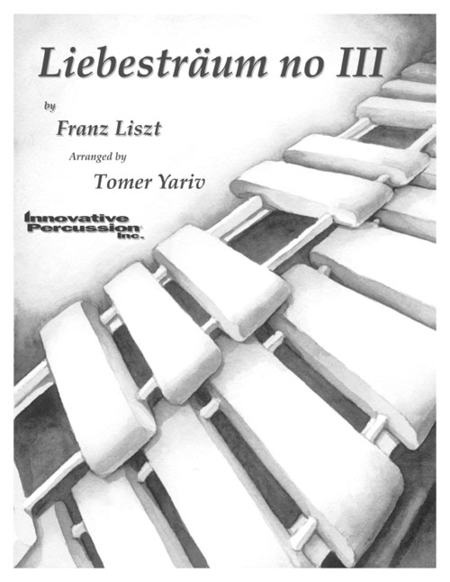Liebestraume no. III
-
Ships in 4 to 6 weeks
Details
Description
SKU: IP.D-FL-LIB
Composed by Franz Liszt. Arranged by Tomer Yariv. Score and set of parts. Innovative Percussion #D-FL-LIB. Published by Innovative Percussion (IP.D-FL-LIB).8.5x11 inches.
Composer's Notes: Liszt once declared, "My sole ambition as a composer is to hurl my javelin into the infinite space of the future." Indeed, his works had many influences over composers and musicians of the 19th and the 20th centuries. Apparently, it had also an influence on the percussion scene and on PercaDu, leading for the arrangement of Liebestraume No. 3 in Ab Major by Tomer Yariv. Liebestraume No. 3 was originally a part of three Liebestraume written as songs. In the Liebestraume piano version, which Liszt also called nocturnes, Liszt moves in and out of the original musical text as he feels need to. It can be considered as split into three sections, each divided by a fast mini-cadenza. The same melody is used throughout the entire piece, each time varied, especially near the middle of the work, where the climax is reached. At the end, the piece dies down into a final chorded section.
"Originally composed for solo piano, this arrangement is scored for vibraphone and 5.0-octave marimba duet. Written for the PercaDu percussion group, this work presents challenges to be met by advanced students and professional performers. Both parts require the performers to be comfortable with chordal and independent four-mallet techniques, with the marimba part requiring the greater amount of dexterity. Aside from technical complexities, the most significant challenge lies in addressing the rubato and flexibility with which the piano version is performed. Tomer Yariv scores much of the "right hand" material in the vibraphone, with the arpeggiated accompaniment in the marimba. While interpretation of this music by a single performer at the piano is difficult in its own right, extra special care must be taken here, as the hands are "split" between two performers. Both players must be in total agreement as to any use of rubato, without which the piece risks losing much of its character. This work is appropriate for an advanced college or a professional percussion ensemble." - Jason Baker, Percussive Notes July 2010.

 Share
Share